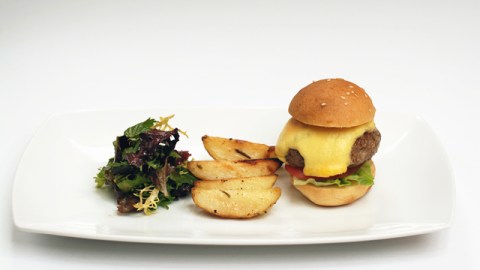Can You Name Asia’s Best Chefs?

This past week, Restaurant Magazine, a British F&B trade publication, unveiled its latest list of the world’s best restaurants. This annual ranking–properly known as the San Pellegrino World’s 50 Best Restaurants–is both revered and reviled around the world. Well-heeled foodies, fans of fancy dining, and journalists who love lists love the San Pellegrino-sponsored survey. So do fine-dining chefs, who are either patting themselves on the back for making it onto this very short list (of uber-priced eateries), or who aspire to be among this crowd one day themselves. On the other side of the fence are price-sensitive diners, as well as legions of foodies who prefer traditional, comfort, or street food over what can devolve into over-manipulated, foraged, chemically enhanced, or too-tiny-to-taste cuisine.
I sit somewhere in the middle. I’ll admit that I am one of the 800 jury members who determine each year’s results. Which in some ways must say that I support what Restaurant Magazine is doing. And I do, to an extent. I think that such surveys are very useful in that they recognize some incredibly talented people who work tirelessly and passionately in an industry that until a generation ago was considered to be strictly blue-collar (well, except in France). Further, the resulting media coverage is fabulous, and especially for restaurants outside of Western Europe and America, it can really make a difference towards their financial longevity and rewards.
But we must also always recognize that these surveys (despite the efforts of marketing peeps around the world) should never be taken as the only or definitive standard, but just one of several rating systems that travellers and gourmands can refer to when planning eating holidays or great evenings out. Diners must also, when choosing which guide or guides to refer to, consider the inherent biases in these surveys. As an Asian and as the co-founder of an Asia-only restaurant guide (the one I started profiles Asia’s best 500 restaurants, as chosen by a public vote and a jury vote each year), I have always approached Restaurant Magazine’s survey with a grain of salt. The San Pellegrino survey has been around since 2002 but until 2009, not one Asian restaurant penetrated this global top 50 list. Was this because Asia didn’t have any restaurants good enough until just three years ago? Or was there another reason?
This year’s results have been better; in fact, each year since 2009, Asia has fared just a tad better. The 2012 list sees six restaurants ranked among the top 50: two in Singapore, two in Japan, one in Hong Kong and one in Bangkok. Even more exciting is Restaurant Magazine’s announcement this week that (thanks to huge financial support from the Singapore government) they will be launching an Asia’s 50 Best list, with the inaugural event taking place in Singapore in February 2013.
Asia has long needed more eyeballs turned towards its culinary scene. The Michelin Guide has done a fantastic job making the world know that the food in Japan — and not just your traditional stuff but exciting, modern and innovative cuisine — is perhaps better than that found anywhere else on the planet. The Miele Guide, published by my company, has helped establish the first regional standard for recognizing Asia’s finest restaurants that restaurateurs and chefs could actually respect (previous to us, most guides in Asia asked for free meals and payment for editorial space); and helped foster a greater regional awareness of food trends and top culinary talent throughout the region. With the establishment of Asia’s 50 Best, it’s my hope and the hope of many that more and more people in the West will start to take more notice of Asia’s culinary geniuses. And maybe someday soon, they’ll become household names, refered to mononymously, like Ferran, Rene, or Heston.
Today, however, Asia has a long way to go. And while some friends have asked me if I am worried or disturbed by the newly announced Asia’s 50 Best Restaurants Awards–because it represents competition to my own guide–my answer (to the question of competition) has to be “no”. Because the reason my business partners and I started our guide was to help Asia’s best chefs and restaurateurs become better recognized regionally and internationally. And the more professionally-run and respected surveys and ranking systems that focus on Asia there are, the closer we get to our goal. In this instance, competition is great, because it means more ways for our best talents to gain the recognition they very much deserve.
And if the results of the various surveys differ? That’s not a bad thing either, because that will lead to more chatter, as foodies around the globe weigh in with their opinions. Right now, though, both the World’s 50 Best Restaurants survey and The Miele Guide have recognized the same restaurant as being the very best in Asia. But for all I know, this could be the first and very last time that happens. Only time will tell.





